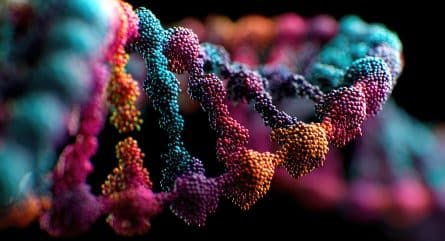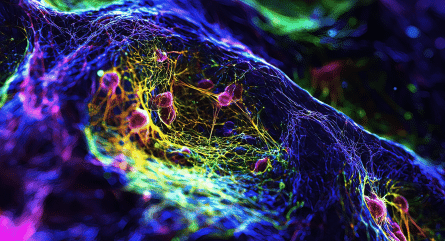Designing Guide RNA for CRISPR Cas9
Designing a guide RNA for Cas9 may feel tricky or even intimidating, but using design tools can help. A good design tool uses optimized predetermined rules for maximizing on-target editing while also checking for (and minimizing) off-target effects, based both on both experimental data and bioinformatics.
In the early days of CRISPR, design tools for guide RNAs were generously made available online by several labs. Some of these academic tools are still available, but their longevity and reliability are variable. Fortunately, free CRISPR guide RNA design tools are available on the IDT website. These IDT tools are continuously improved and updated as the science advances in predicting both on- and off-target activity. In this article, we cover the following sections:
- How does our Cas9 gRNA design tool work?
- Designing guide RNA for Cas12a (Cpf1)
- Download the CRISPR Basics Handbook
How does our gRNA design tool work?
The IDT Custom Alt-R™ CRISPR-Cas9 guide RNA design tool can be used to help you design gRNA sequences for use with Cas9 with high on-target and low off-target activity in human, mouse, rat, zebrafish, and C. elegans for your specific research application. The guide RNA design tool is based on an on-target model, which was built using machine learning to predict whether a guide RNA design will work. The model was trained to predict Cas9 editing efficiency using >1400 features in 560 guide sequences. Predictive features include the composition and position of bases throughout the 20-nucleotide guide RNA sequence, and the probability of self-hybridization between the crRNA and tracrRNA. High on-target scores indicate a guide is likely to work (working is defined as >40% editing efficiency). The model was tested using editing activity data for 215 guide RNAs with high on-target scores.
The IDT guide RNA design tool has 3 modes (accessible using the tabs at the top), as shown in Figure 1 (below).

Figure 1. Screen capture of guide RNA design tool options. There are 3 options: “Search for predesigned gRNA,” “Design custom gRNA,” and “CRISPR-Cas9 gRNA checker.”
- Predesigned gRNAs (quickest and most convenient)
A library of predesigned guide RNAs for 5 species can be accessed using the first tab. We have included CRISPR-Cas9 guide RNAs (such as crRNA and sgRNA) targeting human, mouse, rat, zebrafish, and C. elegans gene targets. You simply enter your gene symbol of interest; then, select the species you are working with and the number of designs you would like. The benefit of ordering predesigned crRNAs is that they allow you to edit the target site with high efficiency. Still, we recommend testing 3 guides for the best results.
- Custom designs
Custom guide RNA designs allow you to target any sequence from any species. The custom guide RNA design tool accepts FASTA-formatted target sequences, and the guide RNAs that are designed can be checked for potential off-target activity against any of the 5 supported species. We recommend designing and testing 3 guides to find the best guide for your CRISPR experiment.
Tip: How to use the custom-design mode to design gRNA
To design your custom gRNAs for Cas9 genome editing, first have the FASTA sequence for the region that you would like to edit. You can find this by performing a search for the genomic sequence of interest on the NCBI website, then select a portion of the genome (23-1000 bp) to use as input. We do not recommend starting with a transcript sequence because of the risk that a returned guide RNA sequence will span a splice junction, which will not occur in the genome.
In the IDT design tool, select the desired species from the drop-down menu, copy and paste the FASTA sequence, then click “Design.” The tool will return a list of the guide RNA sequences along with off- and on-target scores for each guide RNA. If the chance of off-target activity is too high, the tool will warn you (if you are analyzing a sequence from one of the 5 species mentioned above). The tool will also return on-target scoring for a guide RNA sequence targeting any species and will warn you if the on-target score is low, indicating a risk of poor activity. Select a gRNA with the highest on- and off-target scores for optimal activity because of the following reasons:
- A high on-target score is good. It means you are likely to have high editing efficiency at the target site.
- A high off-target score is also good. It means you are not likely to have many off-target effects in the cells. Off-target effects are what you want to avoid, so a high score is good.
- Design checkers The IDT Cas9 gRNA design checker tool allows you to assess on- and off-target potential of guide RNA sequences you have designed yourself, or have obtained from publications, before ordering. As with the custom-design mode, analyses of off-target effects against human, mouse, rat, zebrafish, and C. elegans genes are available, as well as on-target analysis for any species. You can copy the gRNA sequence into the IDT tool. The sequence must be 20 bases long and directly upstream (in the 5’ direction) of a PAM site (NGG, where N can be any nucleotide). After picking a gRNA sequence, the tool will return the off-target and on-target score for the sequence.
Other species: off-target analysis
If off-target analysis in the species of interest is not covered by IDT’s design tools, you can find other guide RNA design tools currently available online from various academic research laboratories. We cannot guarantee the output of the results from outside design tools. However, if you have questions about our tools, our support team is happy to help you. Email us at crispr@idtdna.com.
IMPORTANT! You may notice that our ordering tool allows 19- and 20-nucleotide target sequences for use with Cas9. Our research has found that 19 nucleotides can provide similar editing efficacy to 20 nucleotides, but that 20 nucleotides is the aim. When using Alt-R S.p. HiFi Cas9 Nuclease, 20 nt protospacer sequences have shown to provide the greatest amount of genomic editing.
After using any of the 3 tool modes, scroll down the page to find your results. There’s a convenient link to click and order your Cas9 guide RNA.
Designing guide RNA for Cas12a (Cpf1)
Simple instructions for designing guide RNAs:
- Look at your DNA sequence of interest.
- Find any PAM site close to your desired edit location. The PAM site is TTTV, where V is A, C, or G. Be sure to look at both strands of the DNA, because a PAM on either strand can work just as well.
- Then, go to our ordering page. Enter 20-24 (preferable 21) bases downstream of the PAM site, in the 5’ to 3’ direction, when ordering your crRNA (Figure 2, below). And that’s it!

Figure 2. Designing crRNA for Cas12a. The correct sequence along with some common errors are shown.
Detailed explanation of the simple instructions:
For crRNAs to be used with A.s. Cas12a, identify locations in your target region with a PAM sequence, TTTV, where V is A, C, or G. The PAM can be on either strand of the DNA sequence. If you are using Cas 12a Ultra, some TTTT sites will work.
The Alt-R CRISPR-Cas12a crRNA is a single, 40-44 base guide RNA. It has a 20-base constant region (loop domain) and a 20-24 base target-specific region (spacer domain), which consists of the sequence 3’ of the TTTV PAM in the target DNA. The spacer recognizes (is complimentary to) 21 nucleotides on the strand that does not contain the PAM site. We recommend a 21-base spacer domain for optimal activity. The cleavage site is specified by the spacer domain.
After you identify a 20-24 base target sequence, you can enter it in the ordering page. Then, 20 additional bases and the necessary modifications will automatically be added by our order-entry system for a total of 40-44 RNA bases. These additional bases and modifications are necessary to create a complete Alt-R CRISPR-Cas12a (Cpf1) crRNA. The system automatically converts the final sequence to RNA, so enter DNA bases into the ordering tool (Figure 2), but do not include the PAM site itself.
Fun fact about Cas 12a: Cas12a does not require tracrRNA. So, you don’t need to worry about this!
Download the CRISPR Basics Handbook
This blog comes from our helpful CRISPR Basics Handbook. Whether you’re an experienced CRISPR user or a newcomer to this revolutionary, Nobel-winning genome-editing technology, this free 48-page handbook offers valuable insights and current methods. Download it now for free!
*RUO - For research use only. Not for use in diagnostic procedures. Unless otherwise agreed to in writing, IDT does not intend these products to be used in clinical applications and does not warrant their fitness or suitability for any clinical diagnostic use. Purchaser is solely responsible for all decisions regarding the use of these products and any associated regulatory or legal obligations.
RUO22-1605_001


























